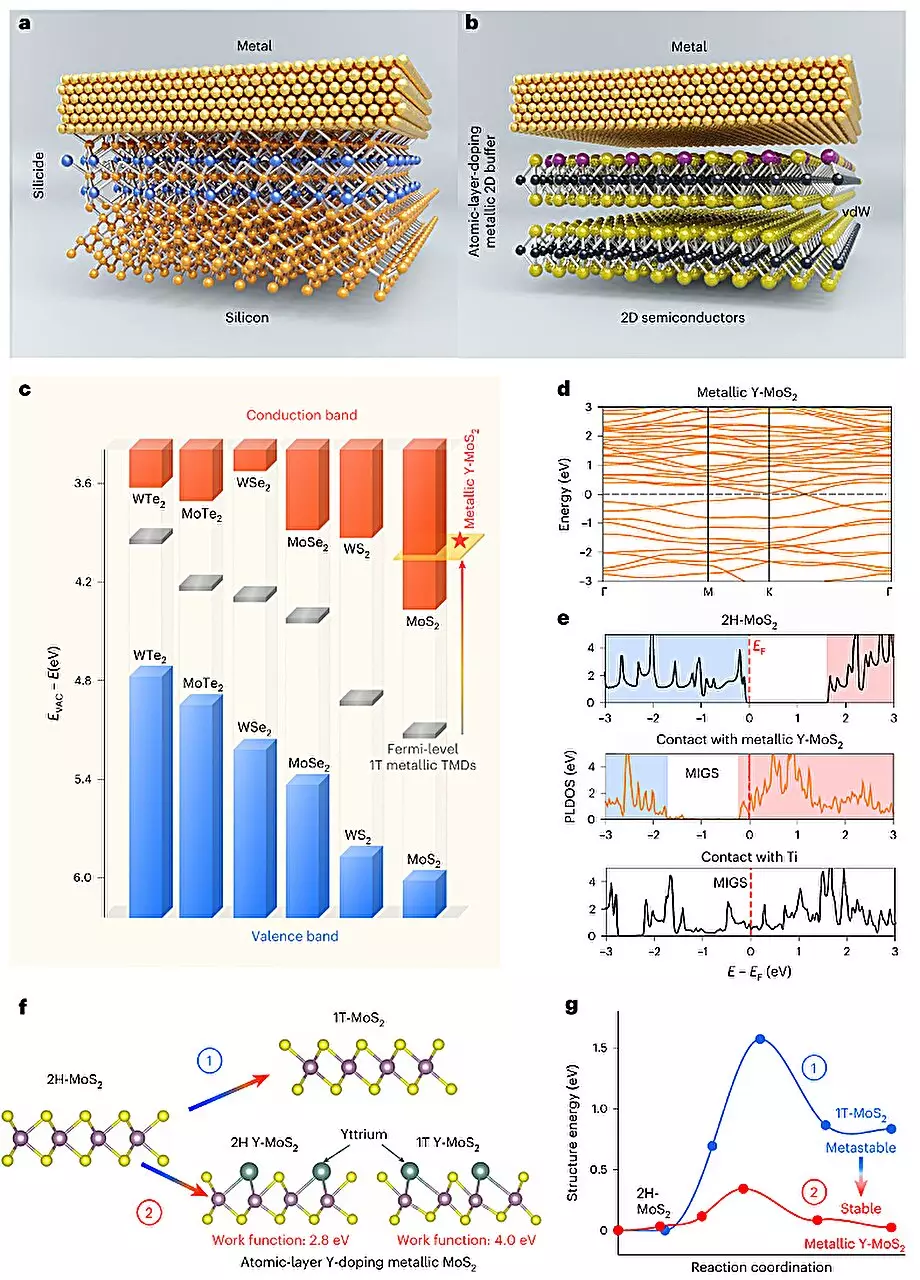The field of electronics is constantly evolving, with researchers and scientists striving to identify materials that can enhance the performance of electronic devices beyond the limitations of silicon-based transistors. One avenue of exploration that has shown promise is the use of two-dimensional (2D) semiconductors. These materials offer unique properties that make them ideal candidates for developing more efficient transistors, such as their atomically thin structure and high carrier mobilities. However, there are challenges associated with integrating 2D semiconductors into electronic devices, particularly in terms of high contact resistances and Fermi-level-pinning effects.
Recent research conducted by scientists at Peking University and the Chinese Academy of Sciences has introduced a novel yttrium-doping strategy aimed at addressing the limitations of 2D semiconductors. This strategy involves converting semiconducting molybdenum disulfide (MoS2) into metallic MoS2 by introducing a semi-metal layer between a metal electrode and the 2D semiconductor. This approach enhances the efficiency of carrier injection from the metal electrode to the semiconductor, inspired by the traditional silicide structure used in silicon-based transistors.
The plasma-deposition-annealing (PDA) method developed by the researchers enables yttrium doping in the surface layer of MoS2. The process involves treating patterned local contact areas with low-power soft plasma to create active sites, followed by the deposition of a Y/Ti/Au stacked metal to serve as a doping source. Through high-temperature annealing in an inert gas environment, the Y atoms diffuse into the active sites and activate in the top layer of the material. This innovative doping process exhibits great thermal stability post-annealing and is compatible with advanced-node wafer-scale integration.
In their research, the scientists introduced the concept of “rare earth element yttrium doping-induced 2D phase transition” to describe the metallization observed in MoS2 when applying the yttrium-doping strategy. This phase transition represents a significant advancement in achieving selective-area single-atomic-layer surface doping, where the doping depth can be pushed to the atomic layer limit of 0.5 nanometers. The researchers successfully developed ultra-short MoS2-based channel ballistic transistors with superior ohmic contacts and switching capabilities.
The development of yttrium-doped 2D semiconductors opens up new possibilities for the electronics industry. The ultra-short transistors created using this strategy have the potential to contribute to the production of sub-1 nanometer node chips with exceptional performance and reduced power consumption compared to traditional chips. Additionally, the researchers aim to further advance their work by focusing on developing high-quality p-type ohmic contacts suitable for 2D semiconductors. By overcoming the limitations of Fermi-level pinning effects, these advancements could pave the way for the next generation of electronic devices with unprecedented capabilities.
The integration of yttrium-doped 2D semiconductors represents a significant leap forward in enhancing the performance of electronics. Through innovative strategies and cutting-edge techniques, researchers are pushing the boundaries of what is possible in the field of semiconductor materials science. The future holds great promise for the development of faster, more efficient electronic devices that could revolutionize various industries and improve the quality of life for people around the world.


Leave a Reply